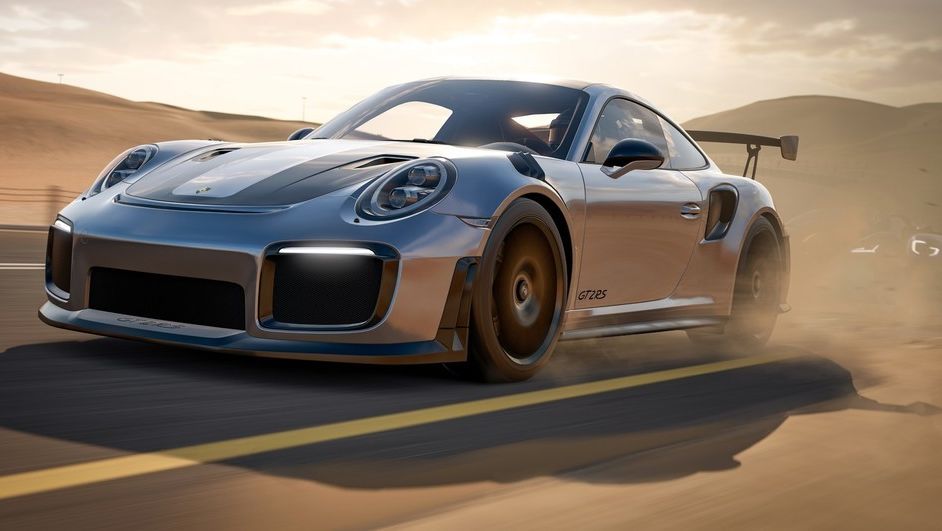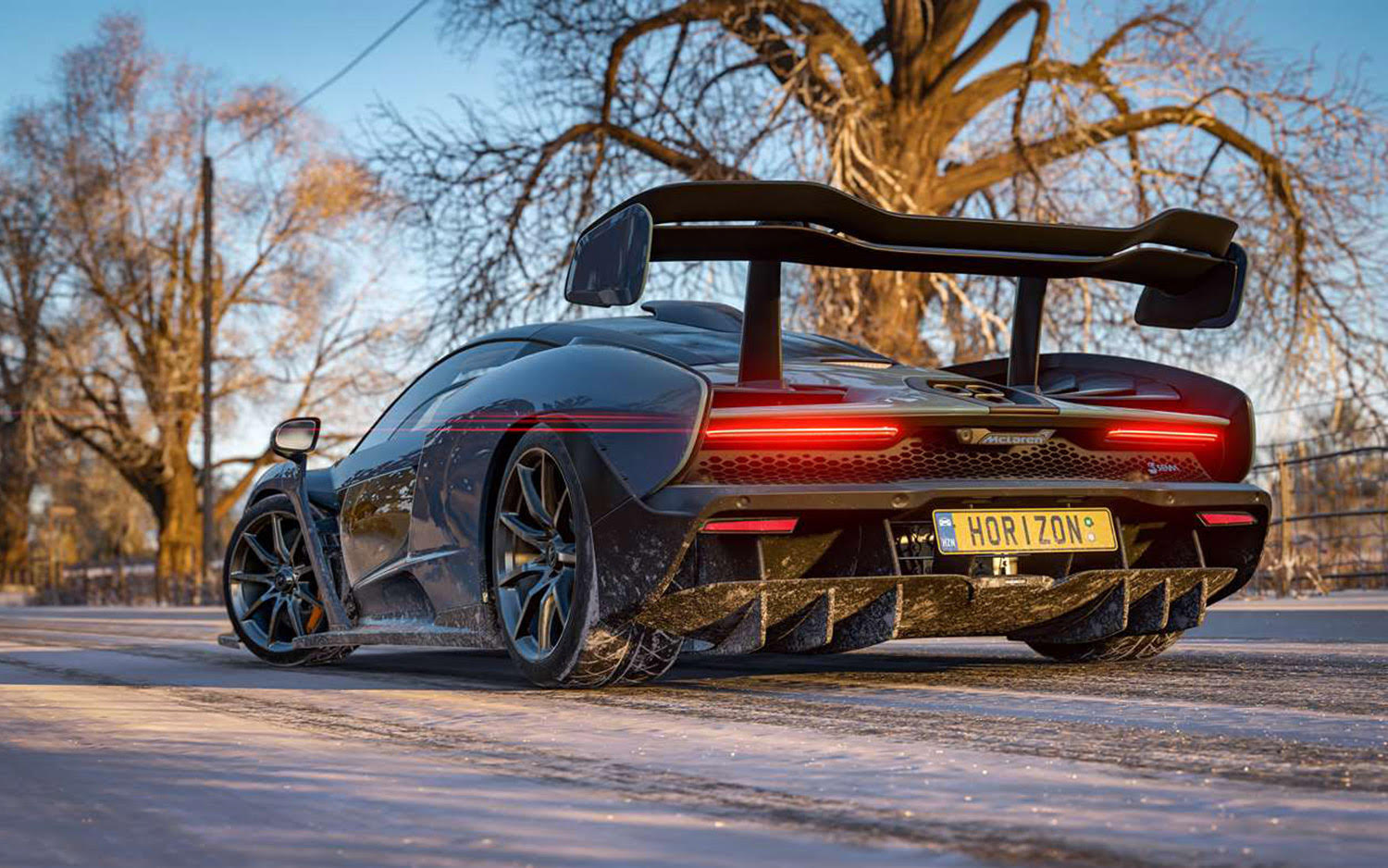First Xbox Series X gameplay may be revealed today with Forza Motorsport 8
Xbox Series X will also demonstrate cloud rendering mixed with local rendering

Today, Microsoft will allegedly reveal Xbox Series X gameplay running at 4K and 120 fps for the long-rumored Forza Motorsport 8. The company may also show off a couple of rather impressive surprises, like cloud-powered Server Side Rendering mixed with local DXR graphics, which apparently will be one of the Xbox Series X's key features.
The show-and-tell will happen at AMD Financial Day, which will go down today (March 5) from 1pm to 6pm PT in Santa Clara, California — at least that’s according to this Reddit post. We don’t know how reliable this post is, but it seems kosher to me. The way things are described in the post may be indicative that he or she is posting notes from a recent keynote rehearsal.
- Xbox Series X: launch date, price, games, controller, and more
- PS5 vs. PC: Which gaming platform is for you?
- Just in: Mystery Star Wars: Project Maverick game just leaked for PS4
The report claims that Microsoft will attend AMD Financial Day to “show off their raytracing solution, built together with AMD for native DXR hardware support.” It goes off to say that it is up to 50% more efficient than the Nvidia RTX implementation for DXR, Microsoft’s own graphics library.
The redditor goes on to describe something that sounds like a blurb taken out of an official press release, describing what we are going to see demonstrated, step by step.
RDNA2‘s deep learning engine
First, it describes that RDNA2 was created exclusively for Microsoft and high power Radeon GPUs. The architecture, the redditor claims, “includes deep learning AI for upscaling, animation interpolation (adding 60 fps support to 30 fps games) and highly varied NPC [non-playable player] intelligence.”
And Microsoft is demonstrating how supposedly amazing this is with a lot of eye candy developed by Redmond-based Turn 10 Studios, the creators of Forza Motorsport. The post goes on to say that Turn 10 has been ”working exclusively on this tech for one and a half years”.
Forza Motorsport 8
The redditor says that Turn 10 and Microsoft will show off a racing game demonstration — which we guess may be Forza Motorsport 8 — that apparently happens in a rainy day. It will include “raytraced reflections everywhere, using a combination of ray traced light probes in low frequency parts of the image for global illumination and actual raytracing close to the near view [frustum].”
Sign up to get the BEST of Tom's Guide direct to your inbox.
Get instant access to breaking news, the hottest reviews, great deals and helpful tips.
Powerful cloud rendering mixed with local graphics
The demo will use Server Side Rendering [SSR] “with rayracing adding on top of that to get rid of SSR artifacts.” The demo will show this with “a slow camera pan over the Nurburgring, the switch between SSR [which happens in Microsoft’s Azure cloud] and DXR [which happens locally, in the Xbox Series X] is not noticeable until they show multi-colored dev mode which part is rendering what and how.”
That sounds really impressive to me and quite distinct from Google or Nvidia’s cloud gaming platforms. We will have to wait and see how it actually looks (if the rumor is true).

Forza Horizon 4
The demo show will reportedly continue with Forza Horizon 4. Here we will see how variable rate shading works on the Xbox Series X. VRS is a technique that allows the GPU to boost detail and quality in complex parts of the images while lowering its power needs in simpler areas.
The reasoning behind VRS is that our eyes and brain can’t focus on the totality of an image. If you are paying attention to the screen, your eyes will be focused on where the action is, which typically is the more complex part of the image. The graphics engine doesn’t have to spend so much power on the less complex, peripherals parts of the image. That results in power optimization that allows to boost detail even more or increase the frame rate.
The results? Playground Games — who develop the Forza Horizon series — added VRS to Forza Horizon 4 when it received its Xbox Series X development kits in December. That increased the frame rate in the game by a whooping 32% with “no optimizations, just using VRS in parts with motion blur.” According to the redditor, “VRS changes the way they design games (VRS as motion blur replacement),” pointing out that the” lead engineer says they can reach 4K/120 today on XSX thanks to RDNA2 architecture and the combined effort of AMD and Microsoft.”
Yeah, 4K and 120 frames per second.
Plus an impressive cloud rendering demo
It's a forest. It's the most mind blowingly realistic forest you have ever seen. Just a camera pan through it, switching between local raytracing and Azure raytracing. The difference is staggering. Different seasons. Snow is forming, the deep sun is shining through every single snowflake on screen, casting diffuse shadows. Snow melts, forming puddles and streams, all lighted with a precision that was impossible until now. Just a glimpse into the future, not actually planned for their next game, local raytracing only for now.
Reddit post
Another feature that Microsoft and AMD will demonstrate together is “what’s next for the industry”. The poster claims that they will “deep dive into xCloud” and the “special cloud features built into [Xbox Series X] and supported by RDNA2 GPUs.”
They will also show Azure raytracing powered by RDNA2 chips, which will allegedly deliver full scene raytracing to any online device connected to Azure. Powered by RDNA2.
The people at Playground again will reportedly jump on stage again with another demonstration. Playground demo people will allegedly say that "this is what our second team has been working on over the past two years" and then proceed to a “live demonstration using realtime connection to Azure”. Here’s a description of what we will see here:
It all sounds pretty impressive to me. The anonymous redditor ends their post asking people not to hate because we will see it all today.
Can’t wait to see all these wonders.
Jesus Diaz founded the new Sploid for Gawker Media after seven years working at Gizmodo, where he helmed the lost-in-a-bar iPhone 4 story and wrote old angry man rants, among other things. He's a creative director, screenwriter, and producer at The Magic Sauce, and currently writes for Fast Company and Tom's Guide.

